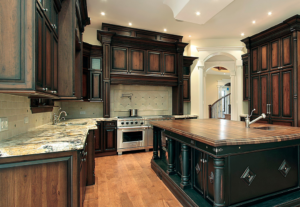
Anyone in construction, whether they’re a beginner or an expert, knows that drywall is usually the standard bearer of any home building or renovation project. It’s what gives the original framework of most any interior room a firm backing, while it provides essential structural support. It’s also known as wallboard, is usually thin and fairly lightweight, though any thickness used will depend on the type of application utilized for both interior walls and ceilings.
Drywall Consistency
Most drywall is made from a kind of rock called gypsum that is ground into powder consistency and pressed into board form. It is available in varying thicknesses and weights, which will depend on its width and height, and the specific application for its use.
Difference between Sheetrock and Drywall
Even those that work in construction and potential homeowners have a tendency to confuse drywall with sheetrock and want to classify both of them in the same category of building materials. The difference is fairly simple as sheetrock is a name brand of drywall that is considered to be a reliable one that many contractors depend on, trust in and use as opposed to more general types of drywall. Sheetrock is also available for specific purposes that provide structure for customized projects that require fire and water resistant applications.
There are consistency differences between sheetrock and more general brands but sheetrock seems to outweigh the others because of consumer awareness of the name brand and the support network provided to its customers. There are those who choose to go with other drywall brands that may be less costly and possibly more convenient.
Types of Drywall Available
There are numerous types of drywall available to choose from that cover most any remodeling or renovation project. Fire, moisture and mold resistant drywall sheets come in different thicknesses to cover certain spaces in a room that would be subject to extensive use and possible damage, such as bathrooms, kitchens and laundry areas.
Drywall Thicknesses
Drywall thicknesses are also important, particularly for ceilings and areas that require coverage for a smoother and easier installation. Sagging and sound transfer are also important particularly if drywall is applied on a level where foot traffic and other noises will be occurring. Both 1/2-inch and 5/8-inch boards can be used with ceilings to avert sagging. Also, acoustic drywall will help considerably with preventing sound transfer. This type of drywall is made with dense gypsum that is also coated with materials resistant to moisture. Most sounds will be kept within the walls and should not resonate to the opposite side
Standard Thickness
The standard or regular drywall thickness is usually 1/2 inch with a width of 4 feet by 8 feet. This is the size that is readily adaptable and the most widely used for basic remodeling and construction projects. There are thinner sizes with 1/4 inch being the most narrow. The quarter inch size up to 5/8 inch is available through home stores, hardware stores and direct orders from drywall manufacturers and suppliers of construction materials.
Calculation
Knowing the weight of drywall sheets and thicknesses can also be determined by online drywall calculators. They can help a contractor or homeowner determine both weight and drywall thickness as well as both standard and lighter weight sheets for uses in most any project.
Understanding the difference between sheetrock and drywall is a fairly simple one, but if you have further concerns about the right kind of drywall for use on various projects, complete the online contact form and an expert will get back to you with the answers you need to determine what kind of drywall best fits your needs.






